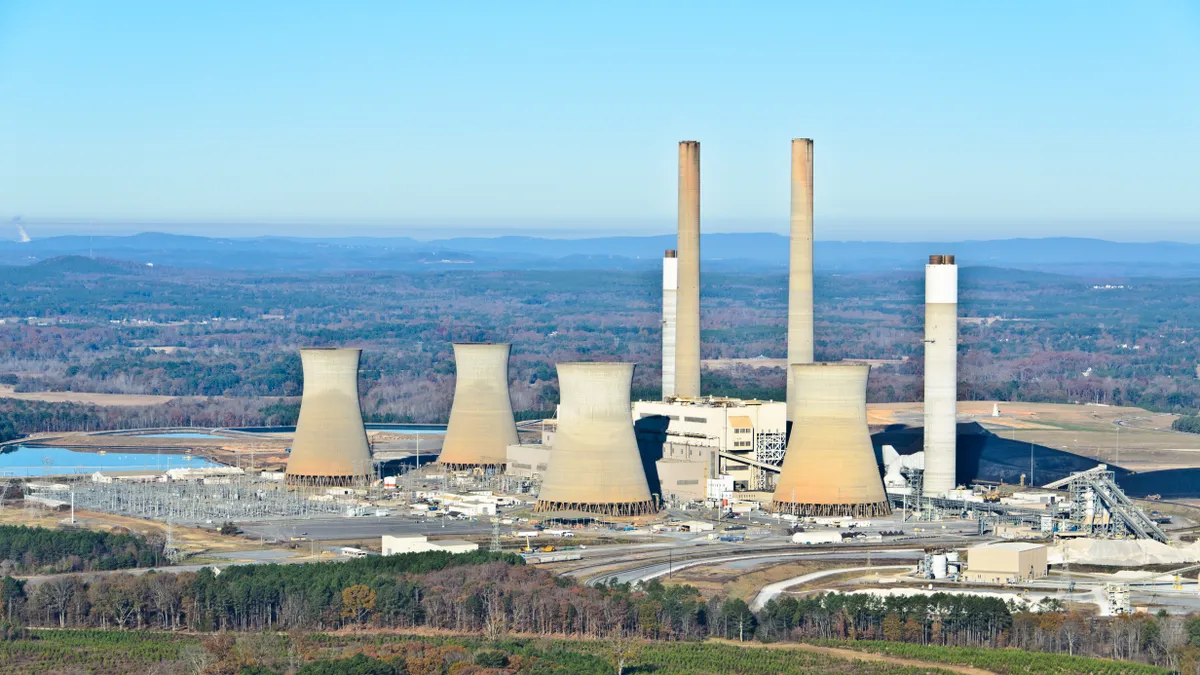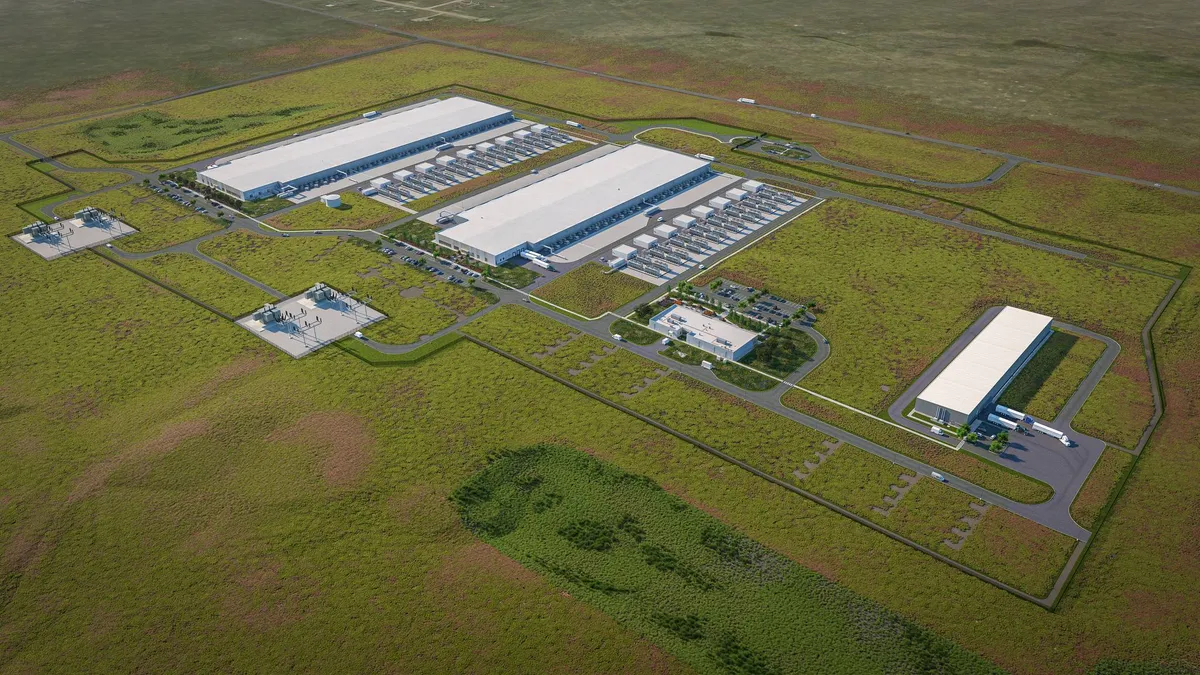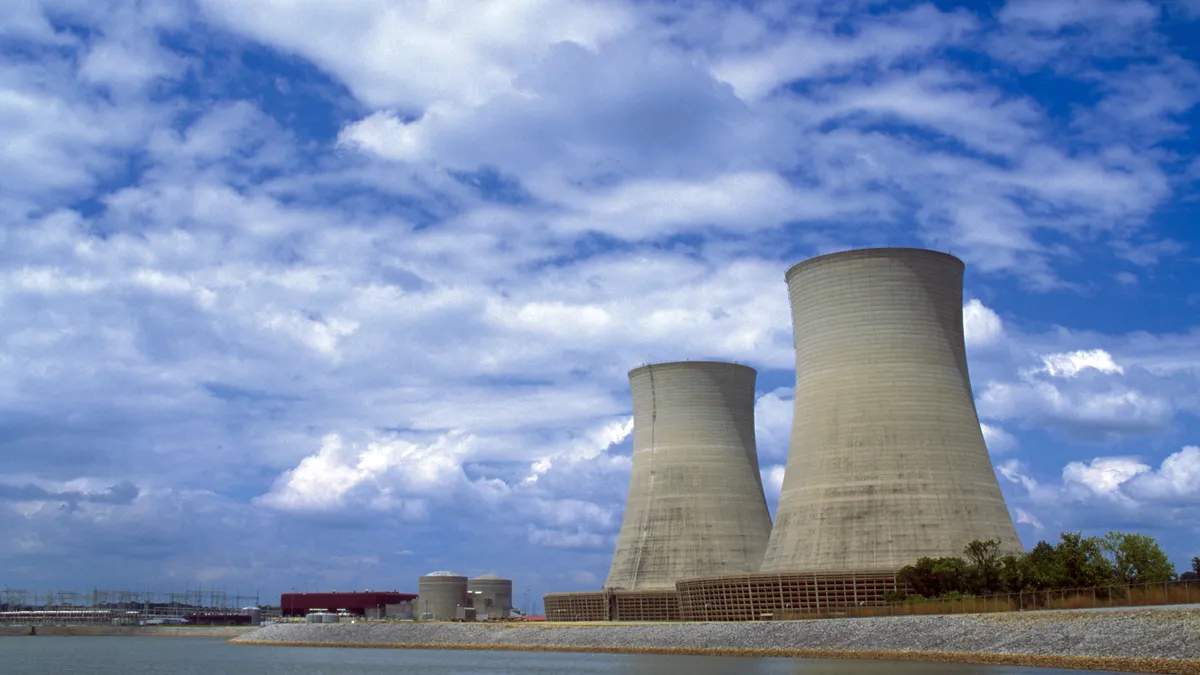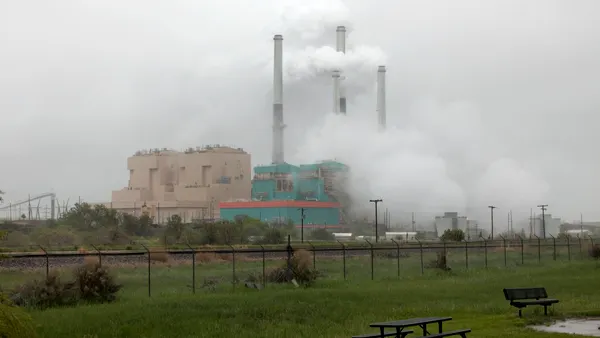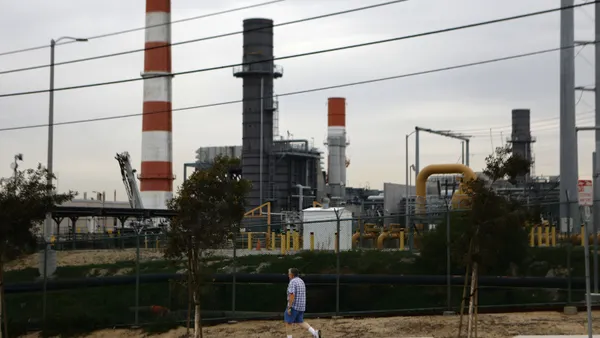Dive Brief:
- Utility regulators on Tuesday approved Georgia Power’s 2025 integrated resource plan, which calls for keeping coal plants online to serve anticipated data center demand. It also includes up to 4,000 MW of renewable energy, 1,500 MW of battery storage and a smaller amount of new gas capacity.
- Georgia Power said it anticipates approximately 8,500 MW of load growth over the next six years. The IRP allows for the Public Service Commission to monitor that growth, with the utility updating its load forecast and making quarterly filings regarding large load developments.
- Clean energy and consumer advocates were critical of the plan’s reliance on coal and gas, and an energy savings target that has not been updated in years. Positive aspects of the IRP around solar, storage and customer programs “are sadly blunted by the continued investment in fossil fuel infrastructure,” said Heather Pohnan, senior energy policy manager with the Southern Alliance for Clean Energy, in a statement.
Dive Insight:
The Atlanta metropolitan area is one of the hottest data center markets in the country right now, and Georgia Power’s long-term plan aims to meet the growing demand. But growth projections remain uncertain and critics of the IRP say it could leave customers on the hook for higher bills if the demand doesn’t materialize.
Approval of the plan “locks in major investments based on uncertain assumptions about future data center demand, while failing to deliver meaningful benefits or cost relief to existing residential and small business customers,” said Patrick King, Georgia policy advocate with the Natural Resources Defense Council, in a statement. “The plan prioritizes speculative growth.”
Data centers are driving U.S. electricity demand rapidly higher, but observers say final construction of new facilities is likely to be a fraction of what has been proposed.
Astrid Atkinson, a former Google senior director of software engineering and now co-founder and CEO of grid optimization software provider Camus Energy, told Utility Dive in May that a conservative estimate was five to 10 times more interconnection requests than data centers actually being built. Another recent analysis concluded there are not enough AI chips globally to support the projections of aggressive U.S. data center growth.
“Georgia Power is pretending it is scrambling to meet the needs of a tsunami of data centers, and it is using that false sense of urgency to create the worst possible plan for Georgia residents,” Sierra Club Campaign Organizing Strategist Lexy Doherty said in a statement.
Georgia Power and the PSC’s Public Interest Advocacy Staff “disagreed over the amount of new energy large load customers were expected to consume over the next several years – although both sides did agree it would be significant,” the commission said in a statement following the unanimous approval of the IRP.
Regulators ultimately approved new production of at least 6,000 MW from all resources and possibly up to 8,500 MW.
“As data center construction continues in Georgia, this IRP puts us in a safe and secure spot to meet that energy need,” PSC Chairman Jason Shaw said in a statement. “This long-term plan continues to strike a balance between reliability and affordability.”
Georgia Power Chairman and President Kim Greene welcomed the commission’s decision.
“As our state continues to grow and thrive, the approval of this comprehensive plan helps to ensure we have the resources and programs we need to reliably and economically meet the future energy needs of our customers,” she said in a statement.
Extensions and uprates included in the IRP include:
- Investment in Georgia Power’s two nuclear plants: Vogtle and Hatch. Specifically, upgrades to Vogtle’s legacy reactors, Units 1 and 2, to produce an additional 54 MW, and approval to proceed with preliminary planning, licensing and engineering for potential future capacity uprates at Hatch Units 1 and 2.
- Upgrades at Plant McIntosh near Savannah to add an additional 268 MW of gas capacity.
- Continued operation of the Scherer and Bowen coal plants, which combine for 4,000 MW but had been planned to shut down in 2028 and 2035, respectively. The plants could continue to operate, co-firing with natural gas, through 2038.
The IRP also calls for procurement of a total of up to 4,000 MW of renewable resources by 2035, with an initial target of 1,100 MW of new renewable resources sought through competitive utility-scale and distributed generation procurements. Georgia Power said the new resources would expand the company’s renewable portfolio to approximately 11,000 MW by 2035.
The company also plans to procure energy and capacity from new battery energy storage projects in an all-source capacity request for proposals as part of the company’s plan to add more than 1,500 MW of battery storage, the utility said.
And the IRP maintains Georgia Power’s energy savings target at 0.5%, despite a 2023 agreement between the utility and environmental and consumer groups to increase it to 0.75% of the company’s annual electricity sales.
Georgia Power has consistently failed to meet even the lower target, said Forest Bradley-Wright, state and utility director at the American Council for an Energy-Efficient Economy.
“Georgia Power’s energy savings target has been 0.5% of annual electricity sales for the last three years, but the utility has saved an annual average of approximately 0.33% in that time,” said Bradley-Wright in a statement. The average energy savings among the the largest U.S. utilities is nearly three times higher than Georgia Power’s, he added.
“With electricity demand in Georgia forecast to skyrocket in coming years, now is the time for Georgia Power to meet its energy efficiency targets and save money for Georgia families and businesses,” he said.
PSC Commissioner Tim Echols said regulators sought to strike a balance in approving the IRP.
“With unprecedented grid growth ahead for Georgia, this Integrated Resource Plan puts us on the right path to meet everyone’s needs,” Echols said in a statement. “I wish it had more solar, more storage, more energy efficiency – but it strikes a good compromise in the spirit of collaboration.”



